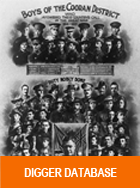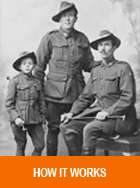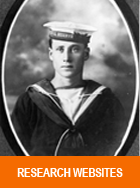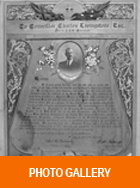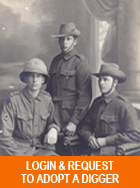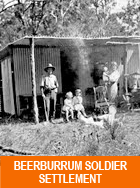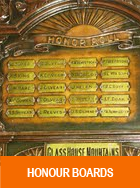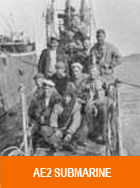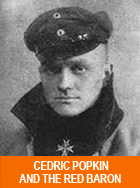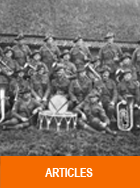The Digger's Slouch Hat
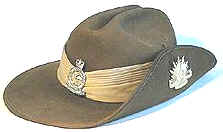 The digger’s slouch hat was first worn by military forces in Australia in 1885 when the newly created Victorian Mounted Rifles adopted it as part of their khaki uniform. The colony of New South Wales was next to adopt a felt hat when it chose this style for its mounted troops. Although commonly believed to be uniquely Australian, similar styles of hat were adopted by many other countries, including the United States, New Zealand, India and even Germany.
The digger’s slouch hat was first worn by military forces in Australia in 1885 when the newly created Victorian Mounted Rifles adopted it as part of their khaki uniform. The colony of New South Wales was next to adopt a felt hat when it chose this style for its mounted troops. Although commonly believed to be uniquely Australian, similar styles of hat were adopted by many other countries, including the United States, New Zealand, India and even Germany. On 22 December 1890, the military commanders of the then separate Australian Colonies met to discuss the introduction of the khaki uniform throughout Australia. They agreed that all Australian Forces with the exception of the Artillery would wear the slouch hat. It was to be looped up on one side — Victoria and Tasmania on the right and the other colonies (later states) on the left.
This was done so that rifles could be held at the slope without damaging the brim. The slouch hat made its first appearance overseas on the heads of troops fighting in the Boer War, and it added much to the mystique of the Australian bushmen. Around the time the first Commonwealth troops arrived in South Africa, the hat began to be more commonly worn with the left side turned up.The slouch hat became standard Australian Army headgear in 1903 and since then it has developed into an important national symbol.
The hat included a two-piece buckled chinstrap and a prominent three-plait of puggaree. Intended for insulation, the puggaree was a traditional Indian head-wrap, adapted by the British for head-dress worn in hot, sunny regions.The most striking addition by some units was the adornment of the hat with the plumes of various birds, including black cock, eagle, swan and ostrich. The best known of these, however, particularly after the exploits of the Light Horse in the desert campaigns of the First World War, was the emu feather. It is believed that this plumage was first adopted by the Queensland Mounted Infantry at the time of the shearers' strike in 1891.
The Poet Laureate, John Masefield, paid the following tribute to the hat: Instead of an idiotic cap that provided no shade to the eye, or screen for the back of the neck, that would not stay on in a wind, nor help to disguise the wearer from air observation, these men [the Diggers] wore comfortable soft felt slouch hats that protected in all weather and at all times looked well.For further reading on the history of the slouch hat:http://www.anzacday.org.au/education/tff/slouch.html http://www.5rar.asn.au/history/hat.htm

